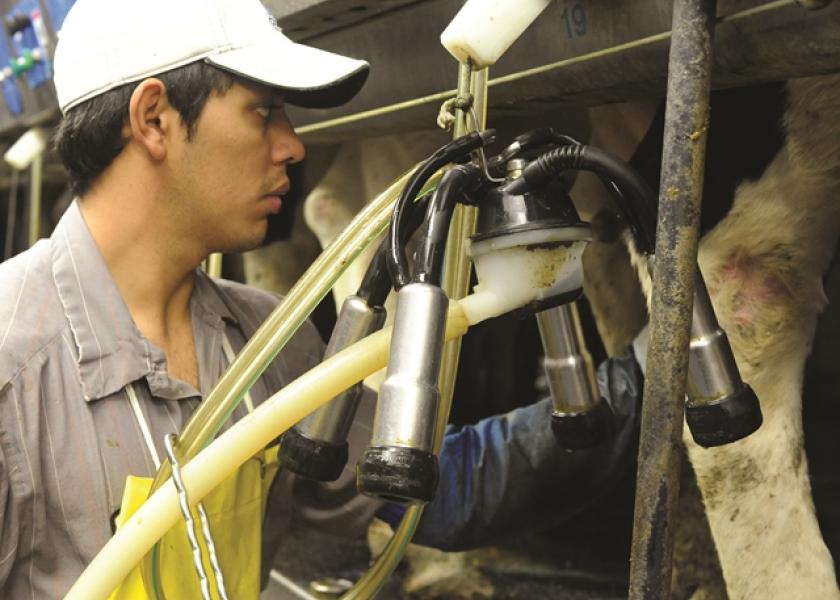Who Will Milk Your Cows in 2025?

With the tightening labor situation, some dairy farmers already worry about who will milk their cows tomorrow or next week.
That challenge grows no less daunting as you fast forward eight to 10 years as rural America changes in response to both national and international economic conditions.
“Greater farm prosperity once meant improved rural prosperity. Now, farm prosperity is dependent on rural prosperity,” says Don Albrecht, director of the Western Rural Development Center in Logan, Utah.
Albrecht notes that the productivity gains of American agriculture are likely unparalleled. In 1900, an American farmer fed seven people—most of whom were his own family. In 2012, that number was 155. Productivity on American dairy farms has quadrupled since the middle of the 20th century. In 1950, the average dairy cow produced 5,500 lb. of milk. Today, she produces 22,000 lb., and herd averages of 30,000 lb. per cow are common.
This increased productivity means farms need less labor. But it also means farms need more skilled labor to operate more complex equipment, yet commercial-scale dairy farms still need less skilled workers to perform repetitive tasks such as milking or calf feeding.
In a sense, rural America mirrors its urban neighbors. Nearly two-thirds of rural jobs are in the service sector. Only a fifth of rural jobs actually create something—such as in agriculture, mining or manufacturing.
“Only 7% of jobs in rural America are in ag,” Albrecht says. So the labor pool for available jobs is already diminished, making it even more difficult to attract new workers, he says.
Some believe if farmers paid more, they would attract more and better workers. But few American-born workers are willing milk cows or rake freestalls eight hours every day.
Many dairy farms already offer above average wages and benefits to attract and retain workers. In a commodity-priced market such as milk, it’s difficult to offer more as prices ebb and flow with uncertain international markets.
Across agriculture, 60% of labor is now done by hired workers. “Most of these workers are born abroad, and most of these are believed not to be authorized,” Albrecht says.
“Uncertainty in the labor sector is increasing costs, and is threatening supply of some food products,” he says. To create more certainty, farms will likely automate even more and rely on technology rather than human workers to get jobs done. “Any job that is repetitive will be replaced by machines,” he says.
But continued automation has its own implications. Automation comes with its own set of costs—both in initial capitalization and in maintenance and repair.
That means primarily larger farms will likely be able to afford ever-more expensive and sophisticated equipment. That will consolidate agriculture even more into fewer but larger farms, likely further straining the viability and vitality of rural communities.







